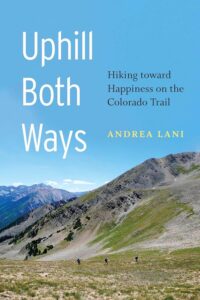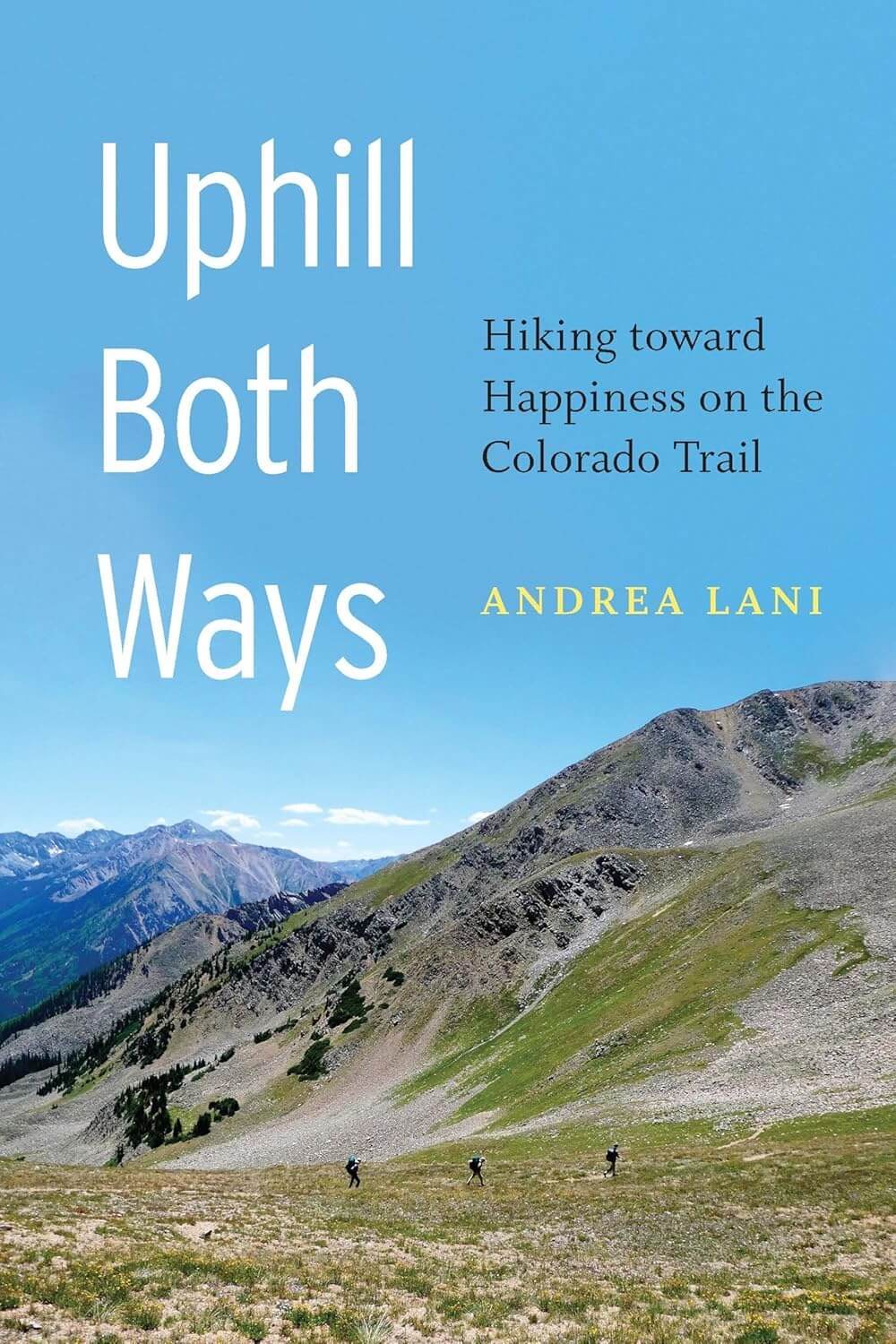A 500-mile hike with kids in tow
Andrea Lani and family take on the Colorado Trail
Andrea Lani and family take on the Colorado Trail
“Now here we are, miles from the nearest sheltering tree, more than a day’s hike from civilization, crouching in a wide-open meadow, next to a pond, twelve thousand feet above sea level. Icy rain drums down on us and thunder shakes the air. Have I put my whole family at risk because I couldn’t find a way to be happy in our comfortable life?”

Andrea Lani
Andrea Lani opens the prologue of her book, Uphill Both Ways: Hiking toward Happiness on the Colorado Trail, with this moment of drama. She has convinced her entire family—husband Curry, teen son Milo and fifth-grade twins Zephyr and Emmet—to travel from their home in Maine to her native Colorado and hike the 489-mile route of the Colorado Trail.
As this epic storm, only the first of many they would endure, winds down, Lani stands up, “knees and hips howling at the indignity of having to crouch for so long,” and wonders if her family will want to abort their long-planned fantasy.
She needn’t have worried. Emmet, one of the twins, stands up from where he’d been crouching under an umbrella and shouts, “Was that fun or what?”
The family started outside Denver 11 days earlier and at this point were nearly 130 miles into their adventure. Over the next six weeks, their route to Durango would be made up of narrow hiking trails and mining and logging roads that wind through six national forests and six wilderness areas, traverse five major river systems, and head into eight of Colorado’s more than 15 mountain ranges.
The Colorado Trail got its start in 1974 when Gudy Gaskill, a passionate hiker and wilderness advocate and the first woman president of the Colorado Mountain Club, was asked to lead an organizing effort to create a trail that crossed the state. It was a giant task, but with an army of volunteers working in partnership with outdoor agencies, the trail finally opened officially in 1987.
Since then, thousands of people have walked the trail. It’s unknown how many have gone the entire distance, but the Colorado Trail web site has a list of more than 5,500 completers, including Lani and her family.
The trek across Colorado is a bucket-list item for many. Lani and her husband had taken it on 20 years prior to their family adventure. This time, Lani is a wife and mother stuck in a boring job more than 2,000 miles away. She writes, “I want an epiphany—a revelation that tells me what life is about and how I should live mine. … Most of all, I want to restore some joy to my life.”
Miles down the trail, Lani finds her thoughts about a joyful life replaced by a different feeling: agony. “My feet hurt. My ankles hurt. My knees, thighs, hips, back and shoulders hurt. What was I thinking, dropping everything to come out here and torture myself this way?” she writes.
Uphill Both Ways is a detailed and informative trail guide, a love letter to Colorado and a surprisingly in-depth look at the human and natural history of the state Lani loves. She doesn’t shy away from her frustration with her body, her hiking speed and her clashes with her goal-oriented husband, who has a different agenda for the hike than she has. Her meticulous packing list was designed to make their loads as light as possible, but she admits later that a stove to heat up their morning oatmeal would have been more than worth the weight.
Many more miles down the trail, she writes, “I do feel closer to the wild here, both the wild world and the wild within me. … But the frustrations of the trail are parallel to those at home.” Still, the family moves on, becoming a kind of legend for taking on the trail with three children.
wild within me. … But the frustrations of the trail are parallel to those at home.” Still, the family moves on, becoming a kind of legend for taking on the trail with three children.
Lani’s attention to detail and command of the language add richness to this book. Her sense of humor shines in her description of a moose— “they appear to be made up of spare parts”—and a badger —“… like a short-sighted old man who’d lost his glasses, it focused on the trail with its nose as it plodded toward us.”
Lani’s self-deprecating admissions are imminently relatable: “I pause, and to make it look like I’m not resting, try to take a picture of a golden-orange fritillary butterfly perched on a magenta thistle blossom. But I haven’t figured out the function of my new compact camera and the butterfly flees before I get it in focus.” Butterflies follow Lani throughout the trip, and their appearances subtly teach the reader about the flora and fauna of Colorado.
Like many who take on outdoor challenges, Lani is searching for something and hoping to learn something about herself. About halfway in, near Monarch Pass, she writes, “I realize I don’t have to be happy all the time. I can be cold, wet, tired, hungry, hot, awestruck, amazed, exhilarated, annoyed, angry, or just focused on climbing up and over a ridge to be with my child.”
The point of this adventure, she writes “is not to get to Durango but to be out here on the trail, experiencing every step, every moment. So often I desire to have done something while the actual doing seems like too much trouble.”
Days and miles later, Lani stops by herself on the trail to rest. “The mountains ahead look impenetrable, but so do the mountains we just passed through,” she writes, realizing there is always a path to sunlight. Lani and her family finish the trail on schedule, leaving readers of Uphill Both Ways with a richly told tale about the Colorado Trail and Colorado, and a likely aversion to cold oatmeal.
Deb Acord is a journalist and author from Woodland Park, Colorado. For decades, she wrote for The Colorado Springs Gazette, Rocky Mountain News, Denver Post and The Indy. At the Gazette, she was co-creator of Out There, a section devoted to the outdoors of Colorado. She is the author of Colorado Winter and Biking Colorado’s Front Range Superguide and has writtten car trend stories and environmental stories for Popular Mechanics.
Click here for more from Deb Acord.

